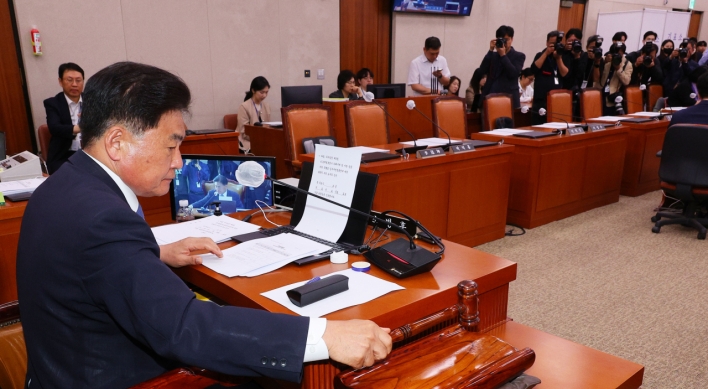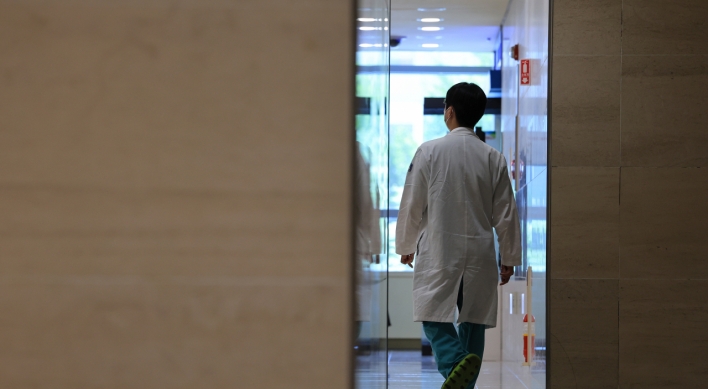China faces a 60 percent risk of a banking crisis by mid-2013 in the aftermath of record lending and surging property prices, according to a Fitch Ratings gauge.
Fitch sees the risk of “holes in bank balance sheets” should a property bubble burst, Richard Fox, a London-based senior director, said in a phone interview on March 4. The risk assessment is from a macro-prudential monitor used by the ratings company.
Chinese banks fueled record property-price gains by extending a record 17.5 trillion yuan ($2.7 trillion) of loans over 2009 and 2010 under the stimulus program that propelled the nation through the financial crisis. Regulators’ efforts to contain the risks for lenders have included stress tests for declines in house prices and a crackdown on lending to local- government financing vehicles.
The Hang Seng Finance Index, which includes five Chinese banks traded in Hong Kong, advanced 0.4 percent as of 10:37 a.m. local time.
China’s risk of a systemic crisis is based on the nation’s MPI3 classification, the highest of three risk categories, in a Fitch monitor begun in 2005. The indicator signaled crises in Iceland and Ireland and has been tested back to the 1980s, Fox said.
Sixty percent of emerging-market countries downgraded to MPI3 face banking crises within three years, he said. China entered that classification in June. The indicator’s failures have included not sounding an alarm about the banking system in Spain, he added.
Banking systems in emerging markets are vulnerable to systemic stress when credit growth exceeds 15 percent annually over two years with real property prices rising more than 5 percent, according to Fitch. Credit growth in China averaged 18.6 percent annually over 2008 and 2009 as house prices jumped, according to the ratings company. Chinese Premier Wen Jiabao pledged more efforts to cool the property market on March 5, telling lawmakers that “exorbitant” increases in housing prices in some cities are a top public concern.
The fallout from China’s lending spree may be bad loans totaling $400 billion, according to Hong Kong-based advisory firm Asianomics Ltd.
China is seeking to avoid a repeat of its last banking crisis, when the government spent more than $650 billion over a decade to bail out banks after years of state-directed lending. (Bloomberg)
Stronger profits
Fitch’s concern contrasts with gains in banks’ profits and capital adequacy ratios and declines in non-performing loan ratios, according to data released by the China Banking Regulatory Commission.
Chinese banks listed in Hong Kong will likely report “strong” 2010 earnings when they report at the end of the month, BNP Paribas SA said in a report Tuesday.
In November, Moody’s Investors Service said that it had “concerns over the intrinsic, stand-alone strength of China’s banking system.” At the same time, the largest lenders weren’t materially damaged by the global financial crisis and aren’t likely to pose any significant contingent liability risk to the government balance sheet, the ratings company said.
“Furthermore, we expect that future credit losses ― arising from the surge in lending in 2009, from exposures to the property market, from risky loans to local government financing vehicles, and from off-balance sheet operations in the ‘shadow’ banking system ― will be mostly absorbed by the banks themselves, either from capital, or from future earnings,” Moody’s said in a statement.
(Bloomberg)
Fitch sees the risk of “holes in bank balance sheets” should a property bubble burst, Richard Fox, a London-based senior director, said in a phone interview on March 4. The risk assessment is from a macro-prudential monitor used by the ratings company.
Chinese banks fueled record property-price gains by extending a record 17.5 trillion yuan ($2.7 trillion) of loans over 2009 and 2010 under the stimulus program that propelled the nation through the financial crisis. Regulators’ efforts to contain the risks for lenders have included stress tests for declines in house prices and a crackdown on lending to local- government financing vehicles.
The Hang Seng Finance Index, which includes five Chinese banks traded in Hong Kong, advanced 0.4 percent as of 10:37 a.m. local time.
China’s risk of a systemic crisis is based on the nation’s MPI3 classification, the highest of three risk categories, in a Fitch monitor begun in 2005. The indicator signaled crises in Iceland and Ireland and has been tested back to the 1980s, Fox said.
Sixty percent of emerging-market countries downgraded to MPI3 face banking crises within three years, he said. China entered that classification in June. The indicator’s failures have included not sounding an alarm about the banking system in Spain, he added.
Banking systems in emerging markets are vulnerable to systemic stress when credit growth exceeds 15 percent annually over two years with real property prices rising more than 5 percent, according to Fitch. Credit growth in China averaged 18.6 percent annually over 2008 and 2009 as house prices jumped, according to the ratings company. Chinese Premier Wen Jiabao pledged more efforts to cool the property market on March 5, telling lawmakers that “exorbitant” increases in housing prices in some cities are a top public concern.
The fallout from China’s lending spree may be bad loans totaling $400 billion, according to Hong Kong-based advisory firm Asianomics Ltd.
China is seeking to avoid a repeat of its last banking crisis, when the government spent more than $650 billion over a decade to bail out banks after years of state-directed lending. (Bloomberg)
Stronger profits
Fitch’s concern contrasts with gains in banks’ profits and capital adequacy ratios and declines in non-performing loan ratios, according to data released by the China Banking Regulatory Commission.
Chinese banks listed in Hong Kong will likely report “strong” 2010 earnings when they report at the end of the month, BNP Paribas SA said in a report Tuesday.
In November, Moody’s Investors Service said that it had “concerns over the intrinsic, stand-alone strength of China’s banking system.” At the same time, the largest lenders weren’t materially damaged by the global financial crisis and aren’t likely to pose any significant contingent liability risk to the government balance sheet, the ratings company said.
“Furthermore, we expect that future credit losses ― arising from the surge in lending in 2009, from exposures to the property market, from risky loans to local government financing vehicles, and from off-balance sheet operations in the ‘shadow’ banking system ― will be mostly absorbed by the banks themselves, either from capital, or from future earnings,” Moody’s said in a statement.
(Bloomberg)










![[Kim Seong-kon] Democracy and the future of South Korea](http://res.heraldm.com/phpwas/restmb_idxmake.php?idx=644&simg=/content/image/2024/04/16/20240416050802_0.jpg&u=)








![[Today’s K-pop] Zico drops snippet of collaboration with Jennie](http://res.heraldm.com/phpwas/restmb_idxmake.php?idx=642&simg=/content/image/2024/04/18/20240418050702_0.jpg&u=)